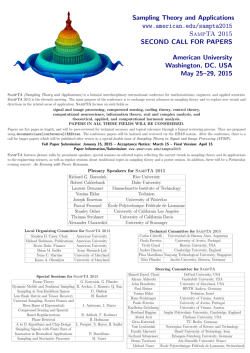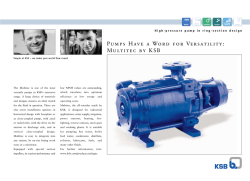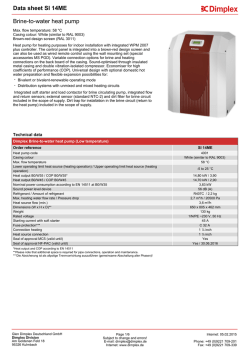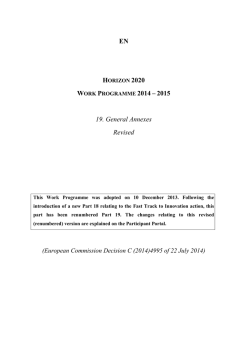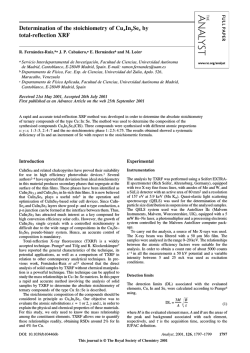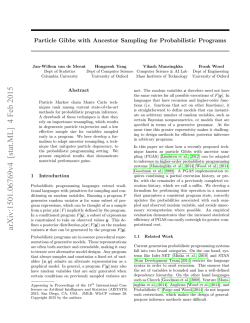
Sampling Train — Disposable PPI Samplers Cat. Nos
Sample Setup Guide Sampling Train — Disposable PPI Samplers SKC Disposable Parallel Particle Impactor (PPI) Samplers are specifically designed to provide the closest match to the ISO/CEN (7708:1995) thoracic and respirable criteria (required by the OSHA 2013 Notice of Proposed Rulemaking [NPRM] for respirable silica). The PPI Sampler inlet contains four miniature impactors, each with a unique 50% cut-point that corresponds to a specific point along the ISO/CEN curve. Each impactor contains a pre-oiled porous plastic impaction disc that scrubs larger particles, while smaller particles collect on a single standard 37-mm filter for analysis. Respirable PPI Samplers are available for use with a sample pump at 2, 4, or 8 L/min, providing options for pump choice, sample duration, and contaminant concentration. The 4 and 8 L/min respirable models allow for collection of more contaminant mass for lower occupational exposure limits (OELs) or for short-term task monitoring. The thoracic PPI Sampler is available for use at 2 L/min. This Sample Setup Guide demonstrates how to set up a Sampling Train Using Disposable PPI Samplers. Required Equipment: 1. An air sampling pump capable of sampling at the recommended flow rate with the sampling medium in line, such as: • SKC AirChek® XR5000 Series Sampler (for 2 and 4 L/min) • SKC Leland Legacy® Sampler (for 8 L/min) 2. An air flow calibrator, such as: • Defender Primary Standard Calibrator Cat. No. 717 Series 3. SKC Disposable Parallel Particle Impactor (PPI), such as: • • • • 2 L/min (respirable) PPI Cat. No. 225-385 2 L/min (thoracic) PPI Cat. No. 225-386 4 L/min (respirable) PPI Cat. No. 225-387 8 L/min (respirable) PPI Cat. No. 225-384 1. Set up the calibration train. The Disposable PPI Sampler arrives assembled. Disassemble the PPI Sampler (see Figure 1) to load it with representative sampling media for calibration, that is, filter and support pads representative of the type to be used in the field (conditioning and preweighing are not required for representative sampling media used for calibration). Using forceps, insert a support pad and collection filter into the base plate. Reassemble the PPI Sampler. Continue to set up the calibration train: press the calibration adapter onto the top of the sampler inlet plate. Remove the end cap from the sampler exhaust. Use a short length of flexible tubing to connect the sampler exhaust to the sample pump inlet. Use another short length of tubing to connect the calibration adapter inlet to the calibrator suction port. Dust enters here Inlet plate (contains 4 impactors with unique cut-points preloaded with 4 impaction substrates and welded) 4. Recommended Collection Filters: • SKC PVC Filter Cat. No. 225-5-37 (for respirable) • SKC PTFE Filter Cat. No. 225-27-07 (for thoracic metalworking fluids) • SKC MCE Filter Cat. No. 225-5 (for thoracic) Protective end cap 5. SKC Cellulose Support Pads Cat. No. 225-27 Standard 37-mm collection filter (user installed) 37-mm support pad (user installed) 6. SKC Calibration Adapter for Disposable PPI Cat. No. 225-389 Exhaust to pump Base plate Introduction Refer to the appropriate analytical method to determine the correct flow rate for the particle size of interest. See operating instructions for the pump to ensure that it is capable of sampling at the correct flow rate. Collar clip Figure 1. Disposable PPI Assembly Publication 1888 Issue 1501 SKC Inc. 724-941-9701 SKC South 434-352-7149 SKC Gulf Coast 281-859-8050 www.skcinc.com SKC-West 714-992-2780 Sampling Train — Disposable PPI Samplers 2. Calibrate the flow rate. After setting up the calibration train, run the pump for five minutes before calibrating. With the representative sampling media in line as directed in Step 1, calibrate the sampler to the flow rate of the PPI Sampler model being used (2, 4, or 8 L/min). See pump and calibrator operating instructions for calibrating flow rate. Once the flow rate has been calibrated, remove the PPI Sampler from the calibrator and the calibration adapter from the PPI Sampler. Record the pre-sample flow rate. Remove the representative sampling media from the PPI Sampler and set it aside to verify the flow rate after sampling. 3. Prepare the sample media. Condition and preweigh a method-specified filter according to method procedures. When ready to start sampling, follow the procedure in Step 1 to insert the new sampling media (support pad and conditioned, preweighed collection filter) into the PPI Sampler (Figure 1). 5. End sampling. At the end of the sampling period, place the pump in Hold or stop the pump and record the sample stop time and other pertinent information. Remove the sampler from the sample pump. 6. Remove the collection filter from the sampler. Disassemble the PPI Sampler. Using forceps, remove the collection filter from the base plate. Place the filter in an appropriate container for shipment. Reinstall the representative sampling media and calibration train as directed in Step 1 to verify pump flow rate. See pump and calibrator operating instructions for verifying flow rate. 7. Prepare samples for shipment and analysis. Pack samples, field blanks, and all pertinent sampling information securely for shipment to a laboratory for analysis. 4. Sample. Use flexible tubing to connect the PPI Sampler exhaust to the inlet of the calibrated sample pump. Clip the PPI Sampler to the worker’s collar in the breathing zone and the pump to the worker’s belt. Run the sample pump. Note the start time and any other pertinent sampling information. Copyright 2015 Notice: This publication is intended for general information only and should not be used as a substitute for reviewing applicable government regulations, equipment operating instructions, or legal standards. The information contained in this document should not be construed as legal advice or opinion nor as a final authority on legal or regulatory procedures. Publication 1888 Issue 1501 SKC Inc. 724-941-9701 SKC South 434-352-7149 SKC Gulf Coast 281-859-8050 www.skcinc.com SKC-West 714-992-2780
© Copyright 2024
